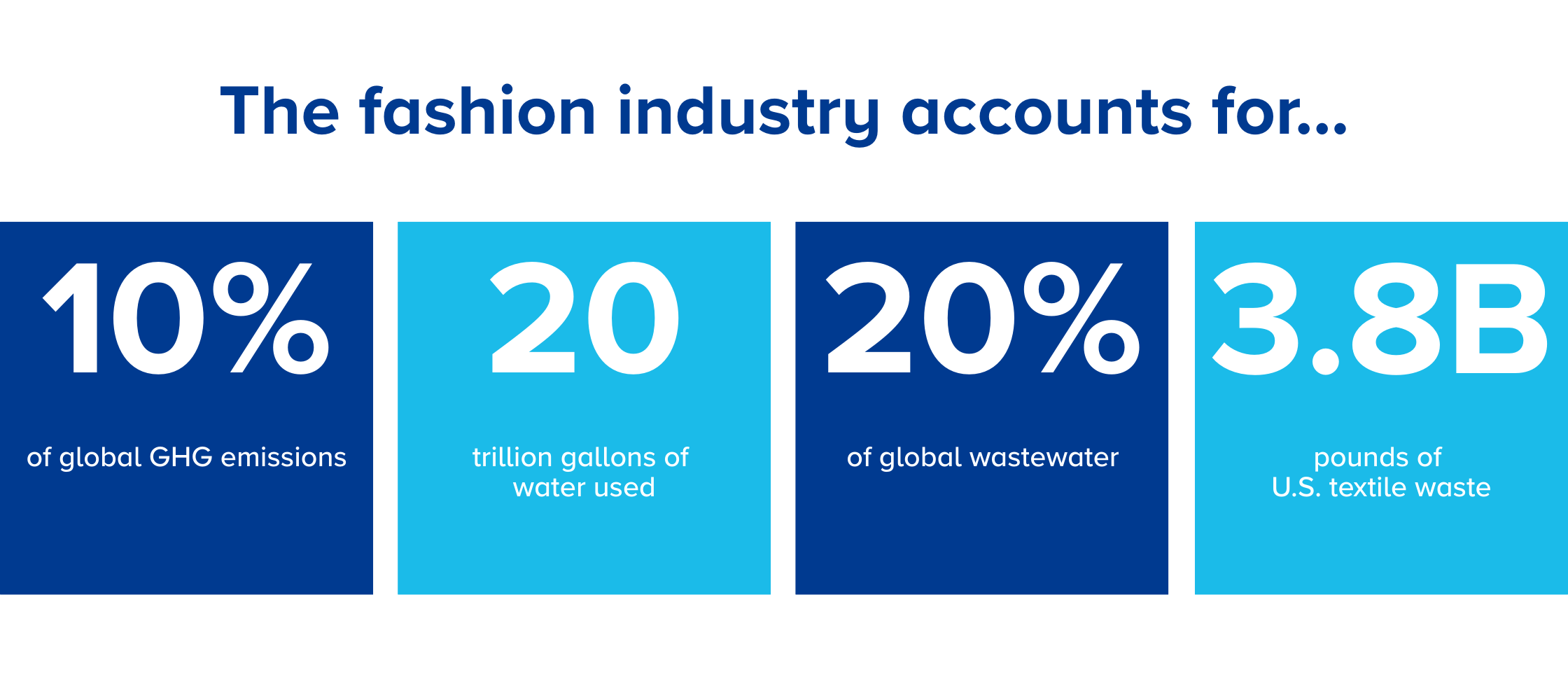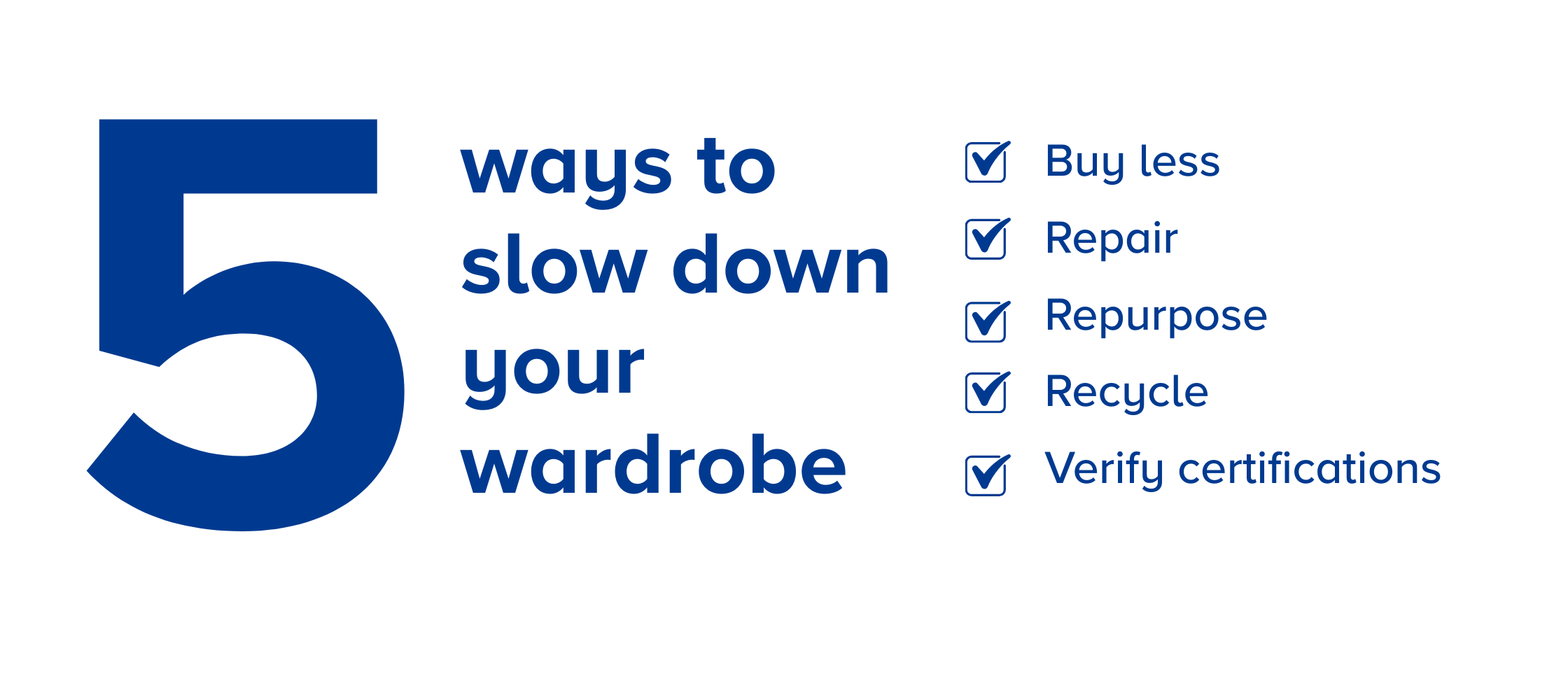How can businesses embrace "slow fashion"?
May 26, 2025
The fashion industry is one of the world’s most polluting sectors. Clothing production alone accounts for 10% of global greenhouse gas emissions, a figure that could more than double by 2050 as fast fashion accelerates manufacturing and consumption.
Unraveling the fashion industry’s carbon footprint
To keep up with demand for trendy, affordable clothing, retailers rely on resource- and energy-intensive production. Over 20 trillion gallons of water are used annually across the supply chain, from farming raw materials to rinsing, dyeing, treating, and finishing textiles. Often, water contaminated with heavy metals and harmful chemicals is discharged untreated, polluting rivers that local communities use for fishing and bathing. The fashion industry is responsible for 20% of global wastewater, creating serious health and environmental risks.

Consumption has also surged. Fast fashion encourages overbuying and short wear cycles; consumers now keep clothes for half as long as they did 15 years ago. In the U.S. alone, 3.8 billion pounds of apparel end up in landfills each year. Much of it is shipped abroad to less economically developed countries in 1,000-pound bales to be hand-sorted and resold. The rest becomes unmanaged waste.
This is particularly concerning given that 70% of textiles today are synthetic. Materials like polyester and nylon can’t biodegrade. Instead, they shed microplastics during wear and washing, polluting ecosystems and entering the human food chain.
Curate your closet and embrace timeless style
Consumers play a vital role in shifting the industry toward sustainability by changing their habits and holding brands accountable. Challenge vague green claims, seek clear commitments, and support companies with verifiable certifications, such as the ClimatePartner certified label.

Build a wardrobe around well-made pieces that reflect your personal style. Learn basic repairs to extend garment life. When ready to part with an item, repurpose, resell, or donate through reputable channels. If reuse isn’t an option, look for certified textile recycling programs to ensure proper disposal.
Tailored reductions across the supply chain
While the fashion industry’s impact is overwhelming, brands can take targeted steps to reduce emissions. The starting point is to calculate a company’s carbon footprint, covering all direct and indirect emissions over a year, organised into scopes 1, 2, and 3:
Direct emissions from owned facilities or vehicles
Tips:
- Upgrade to energy-efficient equipment
- Adopt renewable energy
- Switch to electric fleets
Indirect emissions from purchased electricity in owned spaces
Tips:
- Purchase renewable energy certificates (RECs)
- Switch to LED lighting
- Upgrade HVAC systems
Emissions across the full value chain, often over 90% of a company’s footprint
Tips:
- Collaborate with suppliers to set targets and drive decarbonisation
- Implement low-impact dyeing processes
- Install water recycling systems
Built to last, designed to break down
Once a company has reviewed its corporate carbon footprint, it can apply the same principles to individual products using a “cradle-to-grave" approach. A product carbon footprint measures emissions across every stage, from growing and harvesting the raw materials, to manufacturing, transportation, washing, and final disposal.
This visibility enables smarter design choices. For example, recycled cotton can reduce emissions by up to 80%, yet less than 0.3% of textiles are currently recycled. Garments designed for durability, made from low-impact materials, and supported by repair, resale, and recycling services deliver lower carbon footprints and stronger customer loyalty.
Fashion’s future is sustainable
Calculating carbon footprints and embracing circular design empowers fashion brands to take credible climate action.
ClimatePartner helps fashion brands navigate this journey. Our work with fair fashion pioneers like SANVT shows how a comprehensive climate strategy can reduce emissions while creating lasting value.
Contact us to learn how we can help your brand reduce its carbon footprint and build a more sustainable future for fashion.